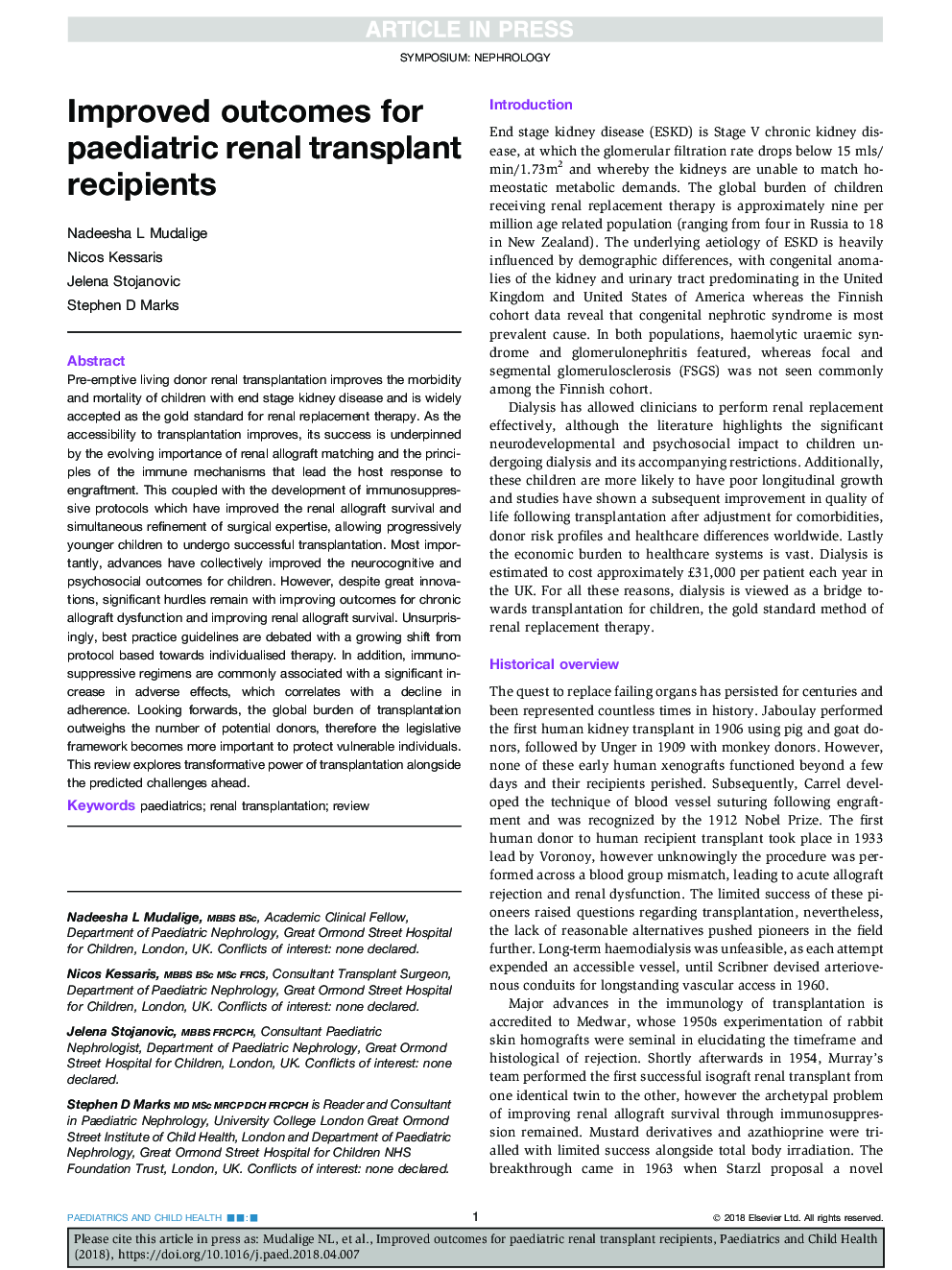| Article ID | Journal | Published Year | Pages | File Type |
|---|---|---|---|---|
| 8813078 | Paediatrics and Child Health | 2018 | 7 Pages |
Abstract
Pre-emptive living donor renal transplantation improves the morbidity and mortality of children with end stage kidney disease and is widely accepted as the gold standard for renal replacement therapy. As the accessibility to transplantation improves, its success is underpinned by the evolving importance of renal allograft matching and the principles of the immune mechanisms that lead the host response to engraftment. This coupled with the development of immunosuppressive protocols which have improved the renal allograft survival and simultaneous refinement of surgical expertise, allowing progressively younger children to undergo successful transplantation. Most importantly, advances have collectively improved the neurocognitive and psychosocial outcomes for children. However, despite great innovations, significant hurdles remain with improving outcomes for chronic allograft dysfunction and improving renal allograft survival. Unsurprisingly, best practice guidelines are debated with a growing shift from protocol based towards individualised therapy. In addition, immunosuppressive regimens are commonly associated with a significant increase in adverse effects, which correlates with a decline in adherence. Looking forwards, the global burden of transplantation outweighs the number of potential donors, therefore the legislative framework becomes more important to protect vulnerable individuals. This review explores transformative power of transplantation alongside the predicted challenges ahead.
Related Topics
Health Sciences
Medicine and Dentistry
Perinatology, Pediatrics and Child Health
Authors
Nadeesha L. Mudalige, Nicos Kessaris, Jelena Stojanovic, Stephen D. Marks,
